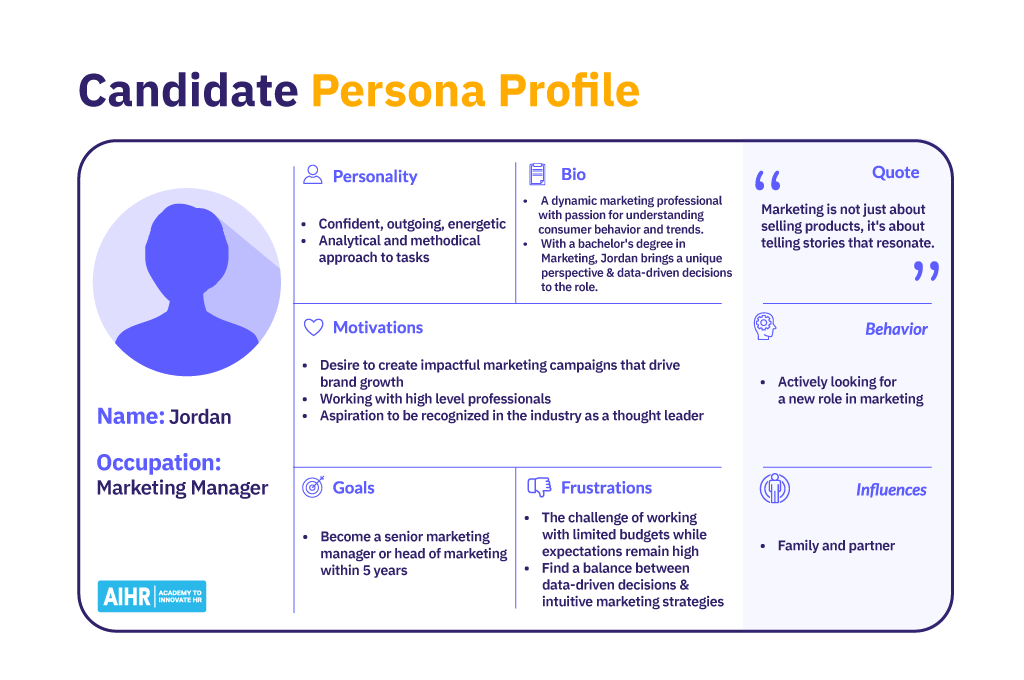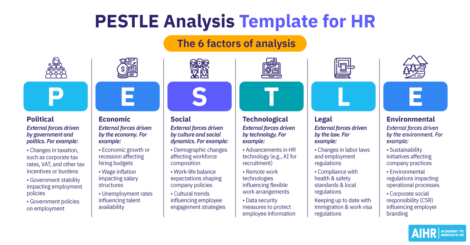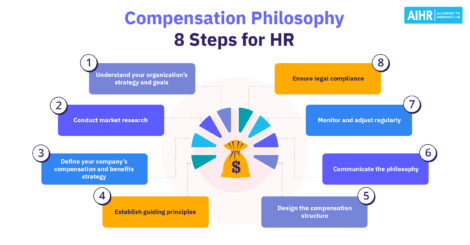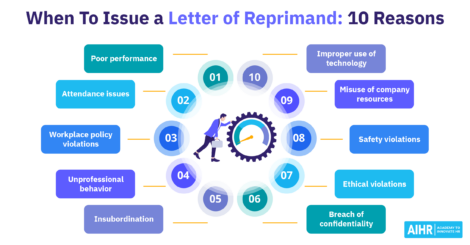How To Create a Candidate Persona: An Essential Guide [+Template]

How can you improve your odds of finding and retaining top talent? The answer lies in creating a compelling candidate persona. This handy tool serves as a guide for attracting and recruiting candidates who are the best fit for your organization.
In this blog, we’ll dive deep into the art and science of crafting a candidate persona. We’ll explore the step-by-step process of defining your ideal candidate. Let’s dive in!
Contents
What is a candidate persona?
Candidate persona example
Candidate persona template
Why create a candidate persona?
How to create a candidate persona
FAQ
What is a candidate persona?
A candidate persona is a representation of your ideal job candidate that guides your recruitment strategies.
It goes beyond the skills and qualifications you’re looking for in a candidate. Instead, a candidate persona delves deep into an applicant’s communication style, personality type, motivations, goals, and soft skills. Think of it as a ‘shopping list’ of what your perfect candidate looks like.
For example, if your ideal candidate has a specific qualification or skill that is essential for the role, you should only interview candidates with that skill or qualification. Moreover, if you’re trying to overhaul the company culture, you should only consider candidates who can evidence the values and behaviors you’re trying to instill in your team.
While adding a name, gender, and age can help you bring your candidate persona to life, it can also lead to an unconscious focus on those characteristics and biases, so be mindful of that.
Candidate persona example
Marketing Manager candidate persona
Here’s what the skeleton of the candidate persona for Marketing Manager could look like:
Details Professional Background Current Occupation Currently a marketing manager or mid-level marketing professional (e.g., marketing supervisor or senior content marketer). Professional Experience 5-7 years of marketing experience, preferably in a similar industry. Experience in other industries is considered if the candidate demonstrates understanding of our industry. Education Bachelor’s degree in marketing, business, or creative discipline. Experience can substitute qualifications. Ideal: Master’s in marketing or an MBA. Key Skills Experience with Adobe Photoshop and Salesforce
Experience with accounts up to $1MCareer Goals Aims to grow in marketing role
Aspires to become senior marketing manager or head of marketing within 5 yearsPersonality Personality Traits Confident, outgoing, energetic
Analytical and methodical approach to tasksCommunication Style Strong in both verbal and written communication
Prefers instant messaging and emailWork Style Embraces a “work-hard, play-hard” ethos
Enjoys a hybrid working modelCulture Fit Fosters collaborative team environment
Aligns with company values
Values work-life balance
Candidate persona template
You can expand on and visualize your candidate persona in a candidate persona template:
Why create a candidate persona?
Candidate persons are a valuable tool during recruitment. They can help you quickly sift through resumes and shortlist top candidates. Creating candidate personas also allows you to:
- Craft effective job adverts: Knowing exactly what type of candidate you’re looking for will help you craft a detailed, impactful job advert. For example, if you’re looking for a candidate with great resilience and adaptability, your job advert should highlight these skills.
- Speed up shortlisting and highlight top candidates: A candidate persona is a great base for specifying your shortlisting criteria, making it faster to sift through applications and identify those who closely match your ideal criteria.
- Improve interview efficiency: When you have a clear persona in mind, interviews can be structured around verifying alignment with that persona, leading to more meaningful and productive conversations.
- Strengthen your employer brand: Understanding your candidates’ motivations and goals helps you shape your employer brand in a way that speaks directly to your target audience and attracts high-quality candidates.
- Enhance team dynamics: By hiring candidates that fit a specific persona, you can ensure a better fit with existing team dynamics, leading to improved collaboration and productivity.
- Boost your quality of hire: Candidate persona provides focus during the recruitment process. This will improve the quality of your hire by ensuring the candidate you pick displays all the skills and traits you’re looking for.
- Increase offer acceptance rate: Using a candidate persona ensures that you are extending offers to candidates who are both qualified for the role and aligned with the company culture and values.
- Decrease employee turnover: Hiring the right person for the role and the company also makes them less likely to leave. When a candidate has the skills, personality, and motivation to do the role, they are more likely to be satisfied and, therefore, less likely to look for other opportunities. And with 74% of new hires actively looking for a new role six months after hiring, recruiting people who will stick with you long-term is crucial.
- Optimize your recruitment budget: Although using candidate personas won’t necessarily reduce your recruitment spend, they can help you put your money where it matters. Focusing on a smaller pool of better-quality candidates is a more effective use of your budget than a large pool of mediocre job seekers.
- Reduce bias during the recruitment process: Whether conscious or unconscious, bias happens in recruitment. A candidate persona helps you focus on what matters – skills, qualities, and merits – rather than demographic characteristics.
How to create a candidate persona
Creating a candidate person doesn’t need to be complicated. Follow our step-by-step guide to creating your candidate persona and streamline your hiring process.
1. Define your objectives
The first step in creating a candidate persona is to define your objectives. Ask yourself, what are we hoping to get from this? For example:
- Find the perfect candidate
- Enhance your job adverts
- Speed up your shortlisting process
- Create a more effective interview process
- Find the right team fit
- Or something else.
Your objectives will help you clarify the outcome of your candidate persona, so it’s important to define this at the beginning.
2. Consider your competitors
The best way to exceed what your competitors are offering is to do thorough competitor research. Explore how they position themselves, their key offerings, and their employer brand.
You should also try to understand the type of candidates they’re aiming to attract. Check out job boards and candidate testimonials to measure the candidates they are targeting. You can also use job review sites to gauge the strategies they employ.
3. Research your target audience
Gather data about the skills, motivations, aspirations, and preferences of your potential applicants.
You could start by asking hiring managers what they’re looking for. Inquire about essential technical and soft skills required for the job and characteristics of current successful employees. You could also gather feedback from current employees on what traits they value in their team.
Review the profiles of candidates who have previously excelled in the roles you’re hiring for. Look for common traits, skills, or experiences that might have contributed to their success.
Collecting data from multiple sources will help you paint a fuller picture of your ideal candidate persona.
4. Analyze and validate the data
Once you have collected your data, it’s time to move on to analysis. Look for recurring themes, skills, or attributes that are frequently mentioned.
You should also be on the lookout for any gaps in your analysis. Perhaps hiring managers value different attributes than peers, and you might need to use other data, like competitor analysis, to complete your findings.
By thoroughly analyzing the collected data, you can uncover valuable insights to help refine your recruitment strategies, enhance your employer brand, and attract top talent more effectively than your competitors.
Once you’ve drawn preliminary conclusions from your analysis, loop back with key stakeholders – especially hiring managers and peers who will be involved in the hiring process – to validate your findings. This iterative process ensures that your candidate persona is both data-driven and resonates with those who are part of the hiring effort.
5. Craft a detailed candidate persona
Once you have completed your analysis, you can move on to crafting your candidate persona.
First, list the key elements to include in your candidate persona:
- Qualifications
- Skills
- Personality traits
- Communication style
- Culture fit
This will be the basis for the candidate persona template or candidate persona canvas to use within your organization.
What exactly your candidate persona will cover will depend on the role and the industry you’re in. For example, when hiring for software engineering roles, you might need to be especially detailed in describing technical skills.
Continue by filling out the sections with the characteristics you’ve identified in your research.
Try to imagine how the candidate will fit into your team and the broader organizational culture. Consider how their skills and personality traits complement the existing team dynamics. Use this to complete your candidate persona creation.
One candidate persona won’t fit all roles within your organization. Think about what most roles you’re hiring for have in common, especially in terms of soft skills or culture fit, and use this as the foundation when customizing the candidate persona per specific role.
6. Put the persona to use
Once you’ve created your first-class persona, it’s time to put it to work:
- Tailor your job postings to speak to the candidate persona
- Align your interview questions with the attributes you’re looking for
- Compare the skills in applicants’ resumes to those highlighted in the persona
- Jot down ideas for how you could optimize your employer brand to attract your ideal candidate persona
- Target your recruitment marketing efforts to platforms where your ideal candidates might be active, like specific job boards, industry events, or social media channels.
This will help you get as close to your ideal candidate as possible.
Creating a candidate persona helped Nestlé Purina utilize their talent pipeline. By personalizing communications based on the candidate persona, they made interactions with the candidates in their talent pipeline more relevant and appealing, which resulted in reduced time to fill, hiring more candidates from diverse backgrounds, and improved offer acceptance rates.
7. Stay open-minded
Although the goal is to find a candidate that is as close to the specification as possible, it’s important to keep an open mind.
Relying too heavily on a rigid persona can lead to tunnel vision, where you might miss out on candidates who don’t fit the mold perfectly but have other valuable attributes.
You don’t want to overlook hidden-gem candidates or those with non-traditional backgrounds. Such candidates have the potential to bring unique perspectives and fresh solutions to the table.
When assessing candidates, it’s important to consider transferable skills, capacity to learn, and growth mindset next to the ideal candidate persona.
8. Refine your persona over time
The job market is ever-changing. As a result, your candidate persona should evolve as well. Use feedback from your recruitment process, candidate and new hire performance data, and ongoing market research to continually refine and adapt your persona.
The bottom line
Candidate personas are a powerful tool that can supercharge your recruitment process. They can help you consider the important attributes while focusing your efforts on high-quality candidates.
The process to create a candidate person will be unique to each business. However, collecting and analyzing relevant data is a key step in any persona creation process. Once you’ve crafted your candidate persona, make sure to align your hiring process to reflect your conclusions.
All in all, candidate personas help set your organization up for success in the dynamic job market.
FAQ
A candidate persona is a hiring tool that helps you create the perfect, semi-fictional candidate for your business. Organizations use candidate personas to optimize their recruitment marketing and hiring efforts to attract and recruit these ideal candidates.
A candidate persona covers the ideal candidate’s personality, skills, and qualifications while disregarding any protected characteristics to reduce the risk of bias in your recruitment process.
To identify a candidate persona, you need to collect and analyze data from multiple sources. You can consult hiring managers and current employees about desired skills and qualities for a specific role, analyze profiles of past successful candidates, and conduct competitor research to identify the skills, qualifications, and personality traits of your perfect candidate.
You should define the key and desired skills, personality traits, and qualifications you are looking for in a candidate. You can also specify other attributes, like the career goals, communication style, and culture fit of your ideal candidates. This will give structure to your candidate persona and ensure that your recruitment efforts are targeted and effective.
Creating a candidate persona for engineering involves crafting a detailed representation of your ideal engineering candidate based on real data and insights.
Start by collaborating with hiring managers and current engineers to understand the role’s technical and soft skill requirements. The persona should encompass technical proficiencies, educational background, work experience, and key soft skills.
The field of engineering, especially software, evolves quickly, so you need to continuously refine your candidate persona.
Weekly update
Stay up-to-date with the latest news, trends, and resources in HR
Learn more
Related articles
Are you ready for the future of HR?
Learn modern and relevant HR skills, online













